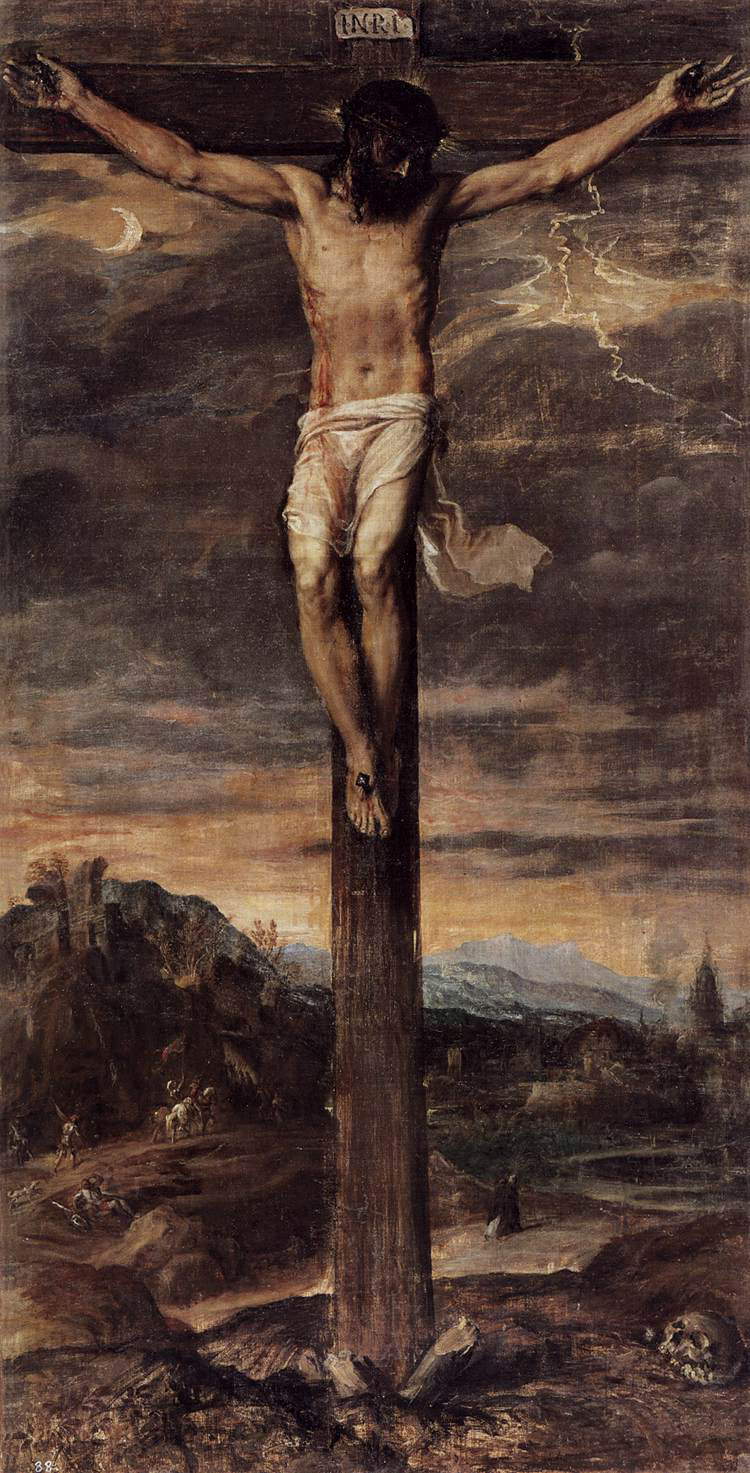A serious accident in Spain, which occurred at the Escorial Monastery, involved a famous painting by Titian Vecellio (Pieve di Cadore, 1488/1490 - Venice, 1576), Christ Crucified. According to Spanish media reports, the monastery’s security services found the Titian painting, usually hung five meters high, ruined on the ground at 10 a.m. last Wednesday. The fall caused the painting to suffer a large, seven-shaped gash in the lower portion of the painting, according to a note from Patrimonio Nacional, the state agency under the Ministry of Culture that manages cultural sites owned by the Spanish state (including the Escorial Monastery).
At the moment, the causes that caused the fall of the imposing painting (it is 2.14 meters high and 1.09 meters wide, and with the frame it reaches 2.42 meters high by 1.37 meters wide) are not yet known, but according to what Patrimonio Nacional’s president, Alfredo Pérez de Armiñán, told El País newspaper, it is likely that the degradation of the plaster wall from which the painting was hanging is to blame: plaster is in fact a material that loses strength over time, and Patrimonio technicians speculate that the one on the wall of Christ Crucified crumbled without anyone noticing the state of preservation it was in. However, the president wanted to reiterate that all the works of Patrimonio Nacional “are well preserved and guarded,” and called the event “a disgrace in which I have a deep regret.” The painting has already been promptly admitted to Patrimonio Nacional’s laboratories where it will undergo restoration. Fortunately, it appears that the work has not suffered any loss of the pictorial film.
Titian’s Christ Crucified is among the paintings sent by King Philip II to the Escorial in 1574, but it is not known with certainty when Titian made the work (the most credited hypotheses want it finished around 1555, for stylistic reasons). Perhaps Titian made it directly for Philip II: indeed, we know that the Cadore painter sent a group of paintings destined for the monarch himself in 1556 to Flanders, then dependent on the Spanish crown. However, art historian Charles Hope has proposed identifying the Christ Crucified at the Escorial as a “most devout work” mentioned in a 1554 letter from Titian, and has suggested that the commissioner may have been Cardinal Alessandro Farnese, who allegedly ordered the work from the artist in the mid-1540s (Titian in fact, in the same letter, asserted that he had had it in his hands for about ten years).
 |
| Titian, Christ Crucified (c. 1555; oil on canvas, 214 x 109 cm; San Lorenzo de El Escorial, Monastery of the Escorial) |
 |
| Serious accident in Spain, at Escorial Titian's Christ Crucified falls and rips open |
Warning: the translation into English of the original Italian article was created using automatic tools. We undertake to review all articles, but we do not guarantee the total absence of inaccuracies in the translation due to the program. You can find the original by clicking on the ITA button. If you find any mistake,please contact us.